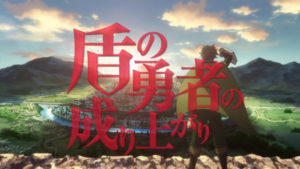Playing through the game in Elite difficulty is pretty much identical to Normal: Enemies have higher max levels (ranging from the high 60’s in Act 1 to low 90’s in Forgotten Gods), enemy HP is given a boost (generally only noticeable where bosses are concerned), the PC’s upper resistances (elemental, poison/acid, & piercing) take a 25% hit, and the item drop rate is notably improved (with some bosses dropping completely new items). Aside from the addition of two new smiths and a couple Devotion Shrines the maps and quests are completely identical (you do get the option of changing which factions you’re aligned with, but that choice is retroactive for the Kymon/Order, Outcast, and Barrowholm factions; return to Normal and your alliances will now match the Elite choices).
Meaning there’s little point in playing through Normal once you have access to Elite… which is where Forgotton Gods comes back into the picture. One of the less obvious additions it makes to the game are a set of ‘Difficulty Merits’ which you can purchase from the new non-faction vendor (when playing on Elite/Ultimate) and then transfer to other characters. Not only do they automatically unlock the higher difficulty levels for that character along with all inventory bags, but they also grant the bonus skill/attribute points you’d normally get from certain quests on lower difficulties and, far more importantly, activate all fast-transit portals on lower difficulties as well. So once you get a single character through Act 1 Ultimate, all future characters can get a massive head start to cut out all the busywork in Normal:
Make a new character, clear the Burial Cave to get access to your Stash, use the Ultimate Merit and pick up a +XP potion (sold by the Malmouth faction vendor at max reputation), jump into Ultimate difficulty and use the potion, talk to the gatekeeper and spirit guide for a massive amount of experience (wear the Explorer’s Hood for an additional boost), leave Ultimate and enter Elite, talk to the gatekeeper and spirit guide here for a less massive but still large amount of experience. You’ll now be level 18+ with several bonus skill/attribute points and full access to nearly all areas in Normal and Elite. From that point you can do a speed run of Normal, just focusing on the shrines and main quests to hopefully hit level 50 (the point Legendaries start dropping) before jumping into Elite and playing normally.
But what about Ultimate? I saw a lot of talk about how Ultimate was ‘the real game’, ‘totally different from Elite’ and so on, building it up to the point I was hesitant to try it. Turns out that was all bullshit. The difference between Ultimate and Elite is almost exactly the same as the difference between Elite and Normal, it’s just that your lower resistances (bleed, vitality, aether, chaos) take a 25% hit now as well and a set of unmarked bonus quests get added. As long as your resistances are near maxed and your total DPS (not weapon DPS, the total from all damage sources) is 40k+ you won’t have much/any trouble with Ultimate. As an example look at this character.
That is certainly not endgame equipment and the damage output is pathetic and yet… I’ve been steamrolling Ultimate so far straight through Darius. The other character I’ve played in Ultimate with was the much earlier mentioned Purifier (slightly modified with FG additions), which breezed through Act 1 Ultimate annihilating everything in its path.
But wait you say, why are you even bothering with that comparatively lackluster Warder? Because that’s a Hardcore character. While the Purifier may deal out insane amounts of damage, it’s less adept at taking insane amounts of damage. Since a single death means the end for a HC character, my attempt to grab the various related achievements by necessity was made with a heavily defense-focused build. And death can come at any time, even for a character that seems to have God Mode enabled while playing it.
The Warder you see isn’t my first attempt at an HC run. It’s the second, with the first being a Shieldbreaker which died in Act 6 Elite. How, oh how did I manage to get such a theoretically unkillable build killed? Player error of course. In Mourndale I ran across Grava’Thul at level 88 and was promptly hit by his dispel attack. This being completely unexpected (I did not know there were two different Cthonic Nemesis enemies and had killed the first with no issues earlier) I was thrown into a state of shock and promptly fumbled around with the hotkey bars trying to reactivate the buffs (misclicking and deactivating the ones just reactivated) and was ultimately killed while trying to use a health potion which had not been bound to the secondary hotkey bar. Ironically, my first D3 hardcore character died in a similar manner.
So yeah, that was totally my fault and not the build’s. The important lessons learned there were A) Keep essential modal buffs on the primary hotkey bar, B) Make sure the health potion is bound to the same key on the secondary hotkey bar, and C) Be extremely careful when engaging Nemesis monsters.
As a bit of a post-script, an incidental lesson was learned while playing the Warder: Armor Piercing does not reduce enemy armor effectiveness as I had long assumed, instead it converts physical damage into piercing damage. Which depending on build may actually result in less damage being dealt.





